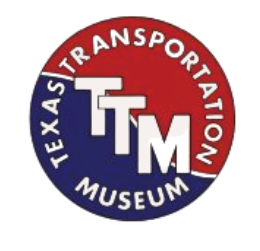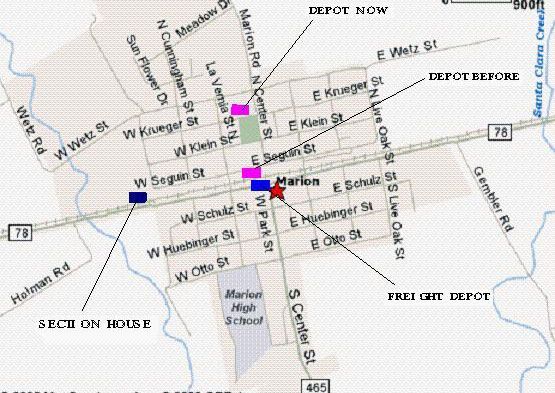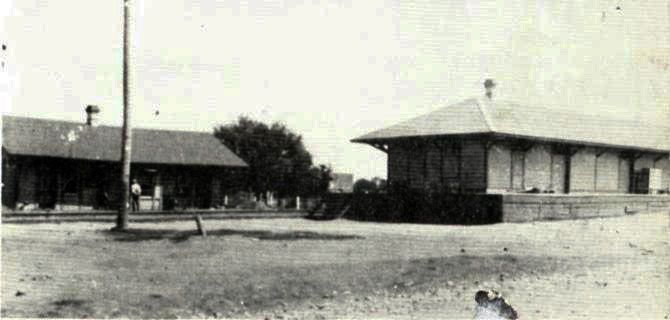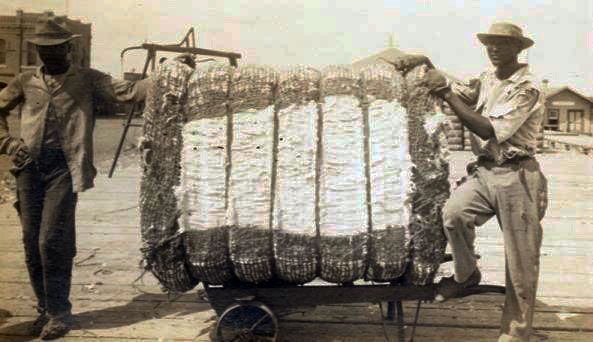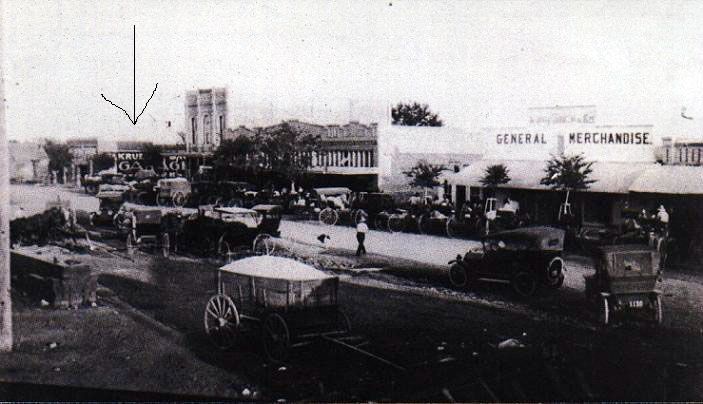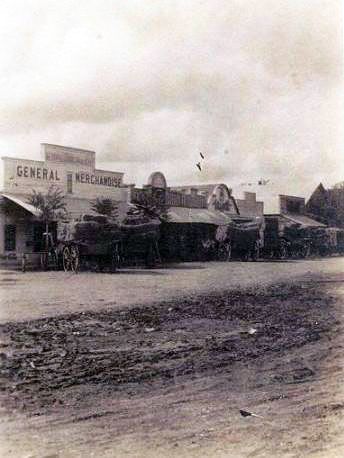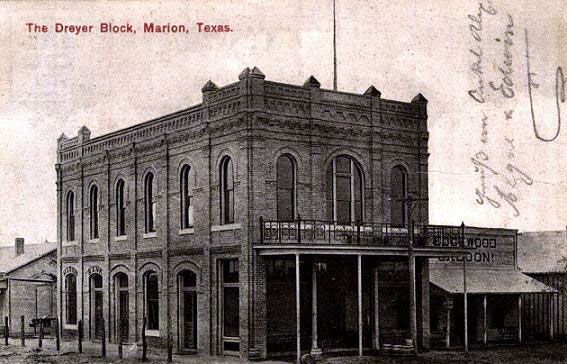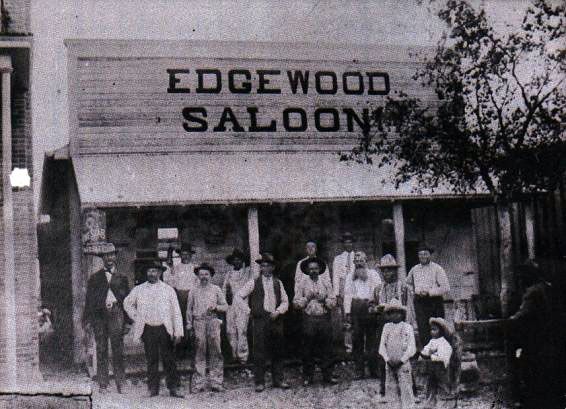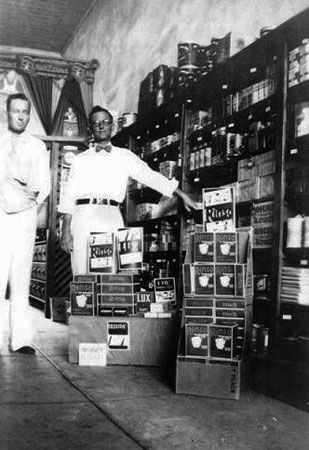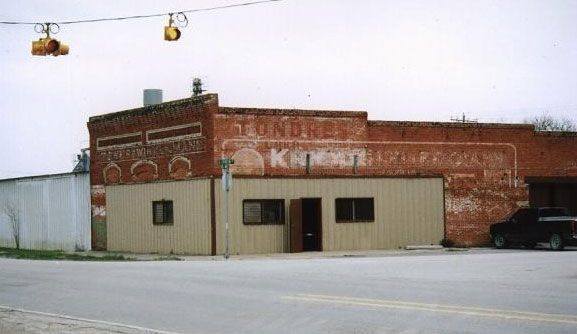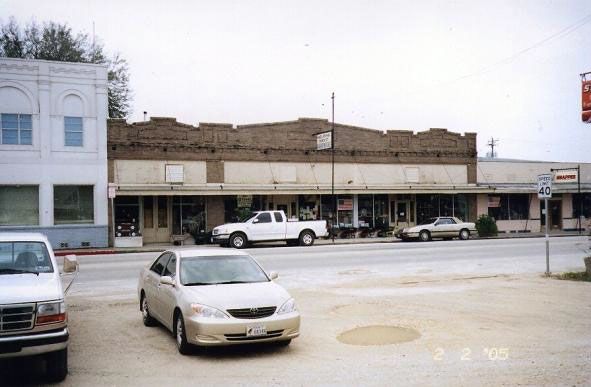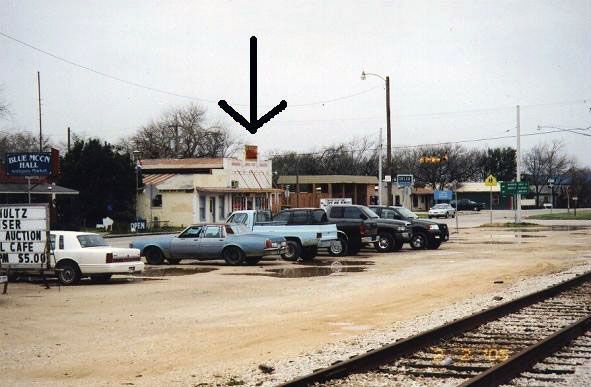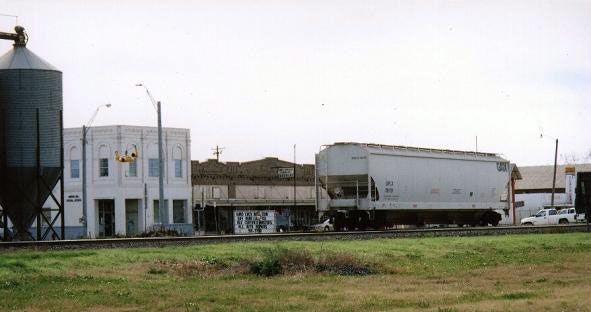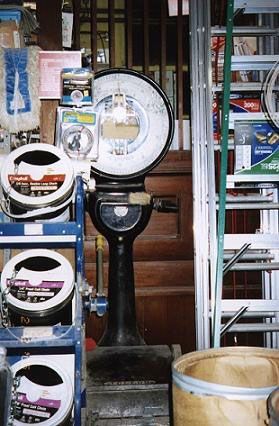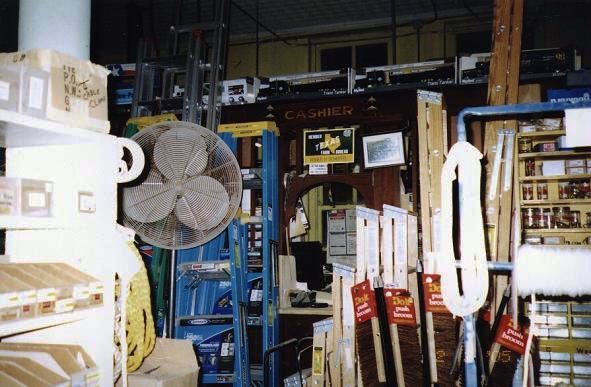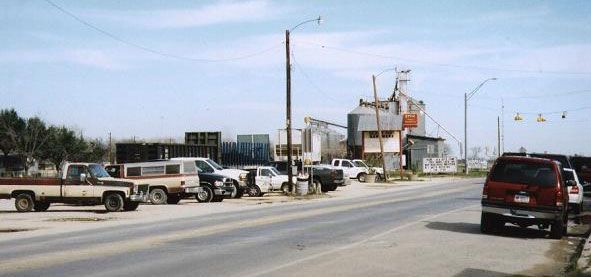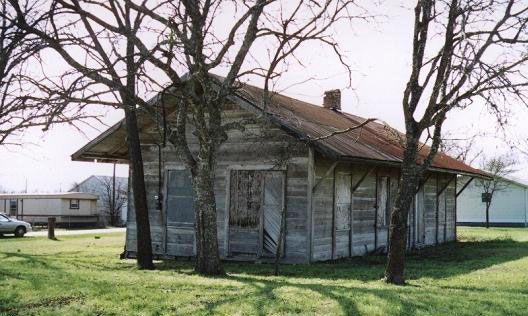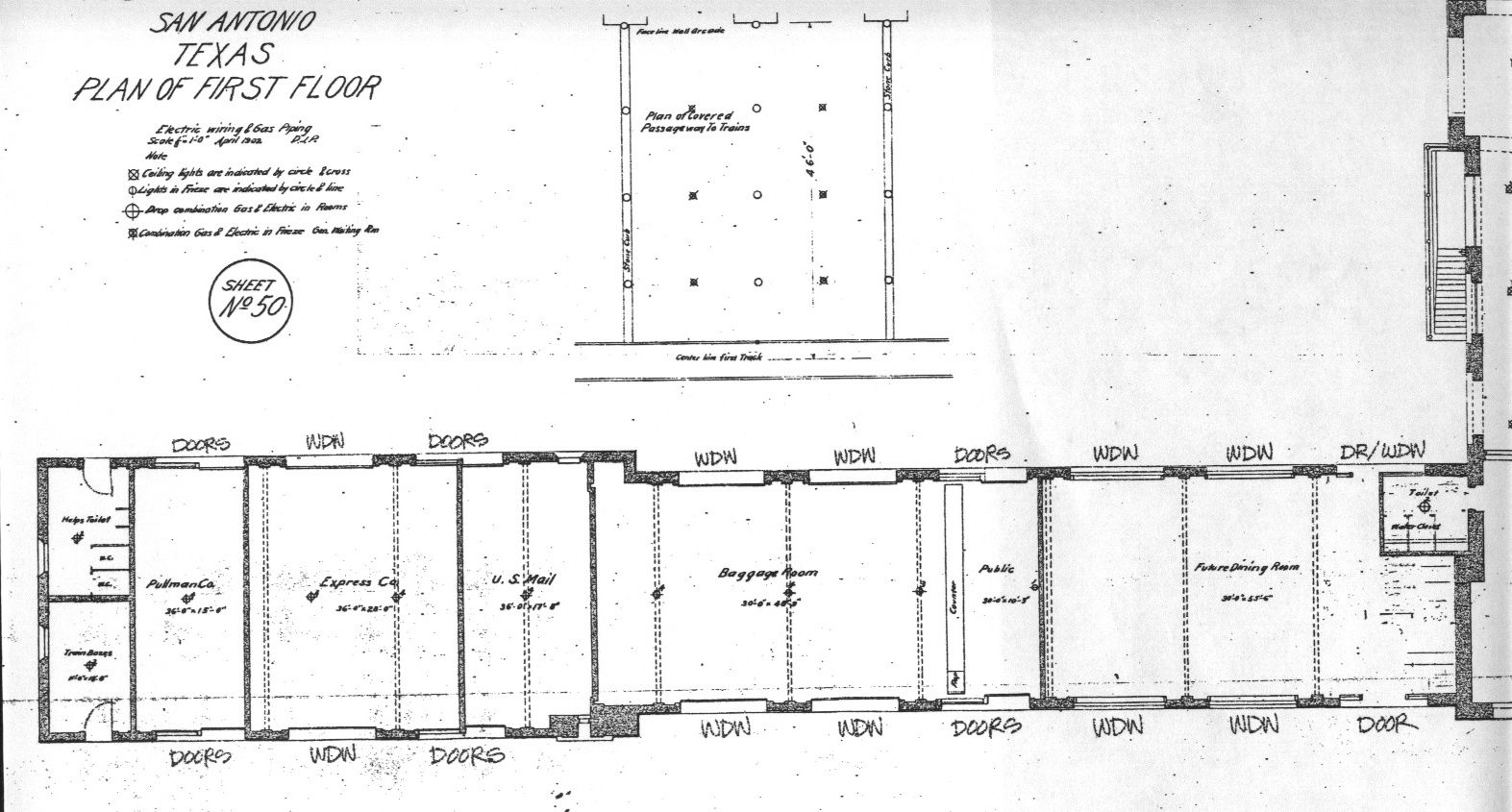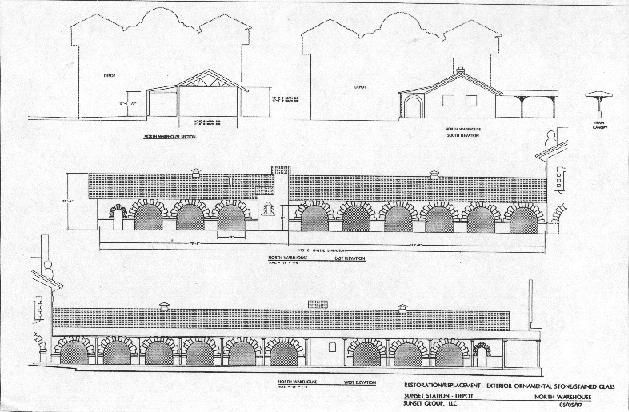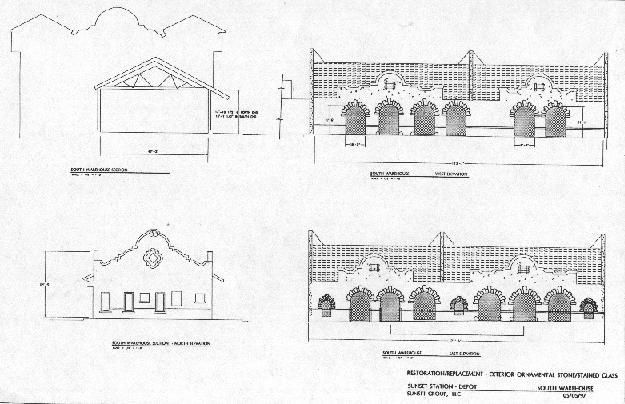The Railroad in Marion, Texas
Map showing railroad points of interest
Thanks to Marion Public Library, Dena Rittiman, Dorisse and Russell Krueger, James Huebinger, Roger Scheffel and Sarah Greveley for their generous cooperation with this project.
Marion is a small town located on HWY 78 approximately half way between San Antonio and Seguin. It has around 1,200 residents and a fine set of schools set in a nicely connected campus. The railroad still runs right through the middle of town, just the way it was planned by Thomas Peirce way back in 1876. Peirce was the owner and developer of the Galveston, Harrisburg and San Antonio Railway. This line would eventually stretch right across Texas, from Galveston to El Paso, bringing modern communications and prosperity right along with it. Marion is unusual in that the town was actually laid out by Peirce himself. He designed the town so that there would be eighteen blocks on each side of the tracks, laid out in three rows of six. As an inducement to settlers, he reserved two blocks; one for the first male one for the first female born in the new town. A question remains after whom the town is named. Was it named for Peirce's own daughter or the daughter of the Dove family? The Doves were the owners of the cotton plantation through which the rails had been built. The answer is, "Yes."
Marion Dove shows up again in E. John Gesick's book, "Under The Live Oak Tree, A history of Seguin." In the 1880s, the state decided teachers in Texas schools had to pass a certain test. Several local teenagers, including Marion Dove sat and passed this test and then went on to have long and distinguished careers in education. It is very likely that it is the same Marion Dove. It is also likely that she married and changed her name because no other historical references to her have emerged far. It is recorded that Marion Peirce visited the town with her father some years after Marion was established and a celebratory dinner was given in their honor. You might also notice that three of the main streets in Marion bear the names Huebinger, Klein and Krueger. Members of each family helped out with this project, along with Mr. Scheffel, who is a fourth generation resident.
It is also recorded that when his railroad finally made it into San Antonio in 1877, there was an enormous party within the city. It is said that some 8,000 people came out to celebrate, approximately half of the city's population. In perhaps a none too well worded invitation, Peirce invited local notables to ride with him the next day in his very own private railroad car to Marion. Peirce's private car was not only luxurious it was also the only one of its kind in the whole state at the time. It is said that an inordinate amount of people showed up to ride with him. Evidently each of these people satisfied the definition of Peirce's invitation, at least in his or her own opinion. Extra cars were drafted to help out and apparently a most enjoyable trip to and from Marion ensued. As most of these people had never been on anything faster than a horse up to that time, it must have been impressive. A trip to Marion by stage coach would have taken a good part of a day and yet, on the new railroad, it was merely an hour or so, and that in considerably more comfort and numbers than had ever been possible before.
As early as 1878, freight operations had grown to be busy enough to require several trains a day. There were three tracks, a passenger depot, a freight depot and a large cotton loading platform. There were several section houses, which were used by the crews who maintained the tracks and their families. Altogether there some 15 acres given over to railroad activity. It was not uncommon for the entire area around the freight depot and cotton loading platform to be full of products waiting to be shipped. There were three cotton gins in town, one owned by Max Heinsohn, one by John Pausewang and the other by the Farmer's Co-op. The nearest compress was in Seguin. Normal sized bales would be shipped there. With additional steam power, one large bale would be made that had the contents of three regular bales. Train hauling cotton were pushed by the early steam engines and not pulled as is more usual. This was to avoid sparks from the locomotive igniting the highly combustible cotton. Regrettably, accidents with early agricultural equipment were very common. A relative of Dena Rittiman, August Klein, lost an arm below the shoulder in an accident at a cotton gin. Her father in law used to work in the cotton fields where Randolph A.F.B. was created. He was paid by the railroad to make sure the water tower was always full. Unfortunately, the railroad did not maintain the small platform there very well and it collapsed under him and he was so badly hurt he could no longer keep farming. He ended up successfully suing the railroad for compensation.
The railroad created opportunities for many entrepreneurs. A case in point were "Drummers." Drummers were traveling salesmen whose job is was to drum up business. These men who arrive in town on the train with their samples and immediately set up a stall near the tracks. They sold any number of items. Dena Rittiman has a set of miniature china that one such salesman used. It was impractical, not to mention heavy, to travel with full sized examples. Many of these salesmen would travel door to door when business got slow. Dena also remembers one very colorful character who was known to one and all as "Chili Chollie." He sold Gephardt products, such as chili powder and a favorite at the time called Chili Meat, which, according to butcher James Huebinger, who would know, largely consisted of lung. Chili Chollie's real name was Charles Hejik and he lived in New Braunfels. His sales pitch was very amusing. These salesmen could be very entertaining and they brought a certain amount of color into the everyday lives of the small towns like Marion they visited. They would stay overnight in the Marion Hotel, a two story, six bedroom establishment, which was right beside the depot.
Another business that needed the railroad was a chicken hatchery which was right next to the tracks at the corner of Lavernia Street. (The same building is a taco house now.) It was owned by an man by the name of Jones in the 1930s. He bought eggs from Wisconsin which arrived by train. Mr. Jones hired several school boys to unload them and bring them to his hatchery. These same boys would then reload the chirping hatchlings later on. James Huebinger was one of them. Current owner of the "Helping Hands" DIY store, that has occupied the three buildings that comprised C.A. Krueger's since the early 1970s was too young to do this work. He, however, made himself a quarter or two collecting old newspapers from Marion residents which he would then sell to Mr. Jones to line the cages with. He recalls that back then you could send the hatchlings by parcel post and you could hardly hear yourself talk in the post office for their constant chirping. The postmaster used to hire older boys to collect the heavy outgoing mail sacks and hang them on the mail pick up rack in time for the 5:00 AM to grab them without stopping. Later on, at around 4:00 PM, the same lad would be responsible for picking up mail sacks for Marion that were thrown out of a train passing in the other direction. One young man who was hired for the task was Lee Jay Schultz. Lee Jay was later killed during World War Two.
By the time Dena Rittiman, who was then Dena Klein, James Huebinger and Dorrisse and Russell Huebinger were in their teens in the late 1930s, the train had already ceased to be the main mode of travel for Marion residents. None of them can recall ever riding on the train to San Antonio. But, in one way or another, their lives were affected by it. It still brought in most of the good to the Krueger store. Cotton was still being grown in the area. In fact it did not disappear until the 1980s. Even after indoor plumbing arrived in 1936, there were still some aspects of life that strike us today as quaint. James became a butcher. After World War Two he established, with a $6,000.00 loan not from the bank but from the Huebinger store, a locker business in the main street building next door. These were frozen meat lockers. Freezers for the home had yet to be introduced. Mr. Huebinger rented out lockers which did the job at a central point. Folks had a key and would come over to either put in or remove whatever they might have. Often, folks might bring in a deer. James would dress the meat for all of two bits an hour, and then some of it would go into his rented lockers.
Trains still rumble through Marion, on the old line that was created way back in 1876. The only local usage is grain and there are some silos right beside the tracks to make loading the freight cars convenient. AMTRAK passenger trains come through three times a week but they don't stop. Its been a long time, over forty years at least, since the last passenger boarded a train in Marion. But the railroad has been good to the town. It was created and laid out by the same man who built the tracks themselves. It brought all kinds of good things to the town and very little harm. Marion would still not be the place it is without it even though it has faded considerably into the background. Gone are the days when the circus would roll into town, bringing with it a whole world of entertainment. That, too, was back in the 1880s. The line has been there for almost 130 years now. Marion and its residents have accomplished much in that time and they have much to be proud of. The old passenger depot is still in town, though it has been relocated by a few blocks. Vague plans to restore it and use it as a heritage center circulated through the community. Nothing would have been more fitting. But a juvenile arsonist destroyed it in a string of fires in late 2008. Several other historic structures were lost, an irreparable loss for the community.
Transportation Museum
CONTACT US TODAY
Phone:
210-490-3554 (Only on Weekends)
Email:
info@txtm.org
Physical Address
11731 Wetmore Rd.
San Antonio TX 78247
Please Contact Us for Our Mailing Address
All Rights Reserved | Texas Transportation Museum
